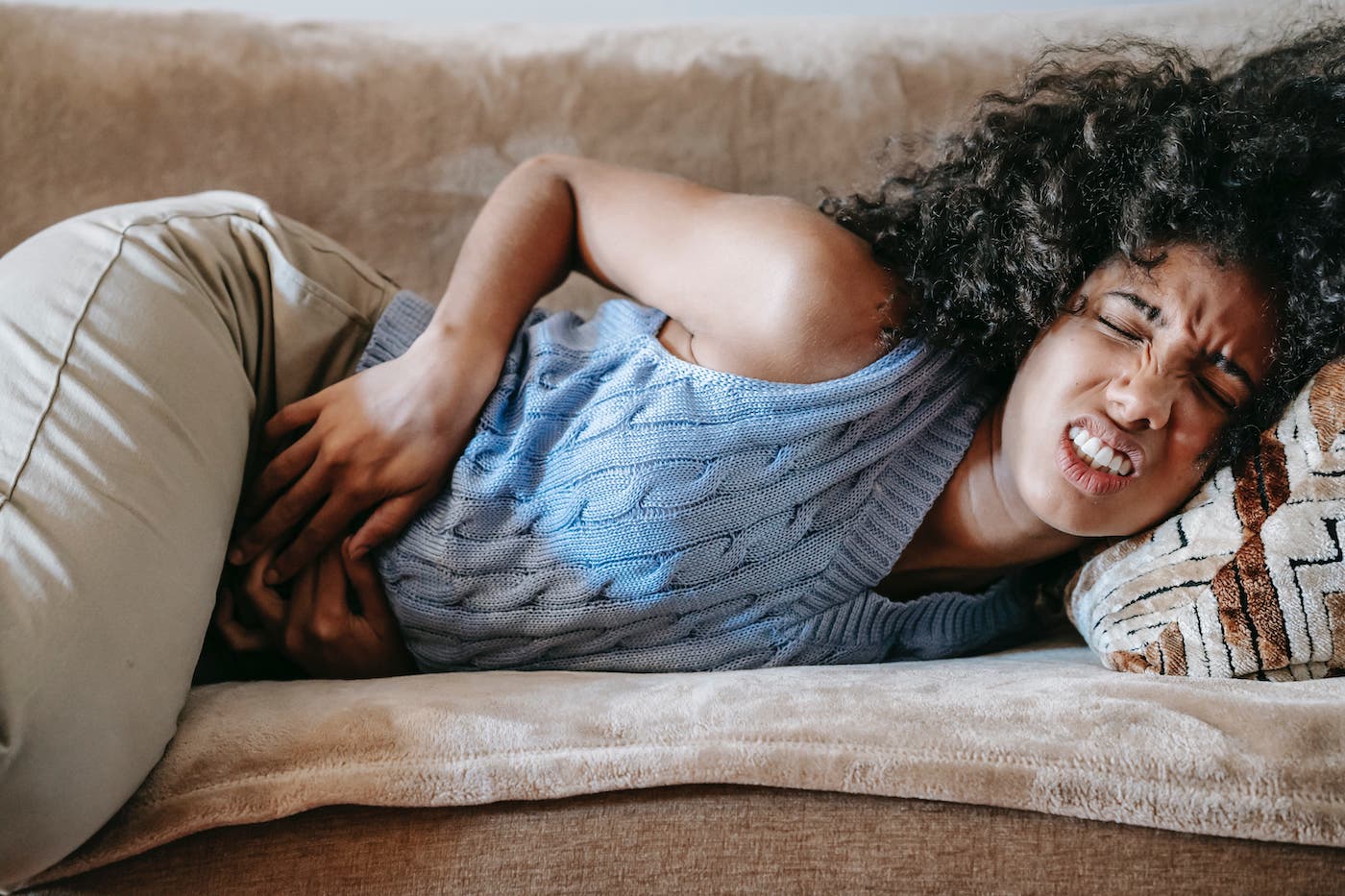Period pains can be incredibly debilitating, upsetting and down right inconvenient.
According to intimate wellbeing brand INTIMINA’s resident gynaecologist Dr. Shree Datta, period pains are often caused by the womb muscle contracting or endometriosis and can be incredibly common on the first day of your period.
Although period cramps may seem like the end of the world at times, Dr Shree Datta lends six top tips and tricks for ditching them fast.
1. Gentle Exercise
If your period pains are mild, think about gentle exercise such as yoga and walking – warm baths, heat patches or a hot water bottle can help relieve symptoms too. Aerobic exercise is thought to stimulate the release of beta-endorphins, which are hormones that can relieve some types of pain. One study found regular exercise for 45-60 minutes three times a week throughout the menstrual cycle reduced period pain, regardless of intensity. Regular exercise may also tackle aspects such as bloating and tiredness that can accompany your periods.
2. Follow A Balanced Diet
A balanced diet may help with your symptoms. Studies have suggested a diet rich in complex carbs and high in fibre can affect your period pains. Eating fish regularly, nuts and calcium were also found to be helpful. Whilst drinking plenty of fluids were helpful, reducing your caffeine intake along with spicy acidic foods can also help. Limiting your caffeine intake has also been shown to be helpful with period pains – think about the strength of your coffee as well as the number of cups you are drinking. There’s some evidence to suggest supplements such as thiamine and magnesium can also be helpful.
3. TENs Machine
TENs Machine (often used in labour) can also help with period pains. This is a small battery-operated device with leads which are connected to sticky pads that you attach directly to your skin. TENS machines are portable, non-invasive and easy to use when needed. They work by delivering small electrical impulses directly to the skin, resulting in a tingling sensation. This can alter the signals to the brain, affecting hormonal balance and blood flow which in turn affects your pain level.
4. Quit Alcohol and Smoking
Research also suggests that smoking and drinking alcohol can affect period pains. In fact a recent study has shown that smoking increases the risk of period problems – including painful periods by almost 1.5 times. Women who have stopped smoking have still got a higher risk of period pains. The theory is that components in tobacco can reduce blood flow, which can affect oxygen levels and contractility in the womb. The links between alcohol and period pains are a little more hazy, but there are some studies which show a higher risk of discomfort and premenstrual symptoms in the time leading up to your periods.
5. Meditation
Meditation and breathing techniques can also be useful. Studies have suggested that yoga can affect not just physical pain but sleep and concentration during periods. Whilst there’s no strict guidance, some women find drinking tea (mint or camomile), gentle massage and lying on their back helpful.
6. Pain Relief
Simple over the counter painkillers such as Ibuprofen and paracetamol can help manage period pains, but if these are not enough, speak to your doctor. Non-steroidal pain relief including ibuprofen. naproxen and diclofenac have shown to be more effective than paracetamol. Try and only take painkillers if you need them, rather than regularly throughout your period. If you go to any pharmacy, you can find specialist pain killers to target period pains, but it’s worth looking at what’s in them before buying them. Perhaps speak to your chemist before buying painkillers for some informal advice and direction.
Dr Shree Datta comments on when to see a GP; “If your symptoms are becoming unmanageable, or occur throughout every period, it’s time to speak to your doctor, who may refer you to see a Gynaecologist.
“We’ll explore the reasons for your pains and offer specialist pain relief, or the contraceptive pill. We may also consider the Mirena coil. In some cases, surgery may be a more appropriate treatment, but this can range from a day-case procedure to have a look inside your womb (hysteroscopy) or a laparoscopy to have a look inside your tummy to a hysterectomy depending on what’s causing your symptoms. We’ll always discuss your needs and preferences before deciding what treatment is best for you – for example, if you are trying for a baby, the contraceptive pill is not a suitable treatment.”
To view intimina’s full range of menstrual cups, please visit intimina.com.
